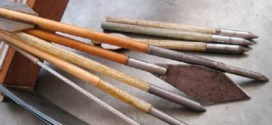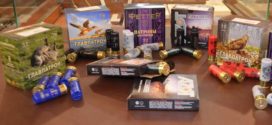There are many different types of gun safes on the market. The difficulty is that some hunters are not satisfied with the dimensions, the internal layout of the safe, while others simply do not have the opportunity to buy it at their place of residence. Making a do-it-yourself safe for weapons, focusing on the requirements of regulations, is not difficult at all. And how to do it - the instructions and standard drawings will tell you.
Do you really need a safe at home? Especially when the dwelling is just a small apartment in a high-rise building, which is already so crowded. Are there other legal ways to securely store a shotgun? These questions are some of the most asked among beginner hunters. A safe for a gun is not a luxury (a hindrance in the house), as those who themselves have nothing to do with hunting believe.
And only after the relevant report of the employee of the Ministry of Internal Affairs is attached to the package of documents, there is a guarantee of obtaining permission. Therefore, like it or not, the problem with the reliability of storing a gun will have to be solved.
Content
Requirements for a hunter's safe
Based on order No. 228 of the Ministry of Internal Affairs of the Russian Federation.
- Production material - metal. If the frame is wooden, then surface upholstery with “iron” is required.
- The minimum sheet thickness (mm) is 3. For the gun itself, a reduction to 2 is allowed if the ammunition for it is stored in a separate metal box (3 for it).
- External constipation (locks) - at least 2. Moreover, on each safe, if the gun and ammunition are stored separately.
- It is necessary to exclude free access to it for any person, including family members, especially minors and children (to the question of the installation location and dimensions).
- Permissible distances (at a minimum, in m) from: heating radiators - 1; front door - 1.5; windows - 0.5.
It seems to be true and reasonable, but what kind of document regulates this? Therefore, this nuance should be immediately clarified when contacting the LRR (an abbreviation for the department that issues a license for a hunting rifle).
The fact is that there are many models of safes, including those that are disguised in pieces of furniture. For example, on the sofa.
Convenient, practical, elegant - no doubt. But won’t you then have to redo all this, mounted with your own hands, regretting the lost time and the materials used up?
How to make a safe
materials
Basically it is clear - sheet iron 3 mm. The corner for the frame will be enough for 2.5. It is worth considering that the door will turn out to be heavy, so you need to count on installing at least three hinges.
Schematic drawing of the safe
All dimensions are in mm.
- Height. The main guideline is the size of the gun. It is necessary to take the length of the gun as the main parameter for the height of the box, depending on how it is stored (folded or assembled) and add about 100. If ammunition is supposed to be placed in the same safe, then for the corresponding compartment - plus 280 - 300. Total - within 1350 - 1750. Even for the longest-barreled gun (for example, the Tiger carbine) is enough.
- Depth. It mostly depends on whether the hunter uses optics. If a gun without a sight, then 350, with it - 500.
- Width. For one hunting rifle, 300 is enough. An additional 200 is for shelves, which usually store various accessories for cleaning, lubricating, equipping cartridges. The total is at least 500.
The most common scheme of a hunting safe is shown in the drawings below:
Features of the manufacture of the safe
A step-by-step instruction for a person who is accustomed to do everything with his own hands is hardly needed. Welding the frame, sheathing with sheet metal - these are elementary things. The end result should be something like this:
But there are points to consider:
- It is desirable to further strengthen the front panel of the frame (with the same corner).
- Welding should be carried out so that all seams are located inside the safe.
- From the back of the door you need to weld stiffeners. First, it will come out stronger. Secondly, it will not work to remove it from the loops by simply lifting it up. A welded corner will interfere.
- It is possible to reduce the total weight of the safe by using non-metal for the shelves, but a different material. For example, plywood FSF, chipboard.
- It is desirable to finish the inside of the safe with something soft. Felt, foam - it doesn't matter. The main thing is that when putting the gun into storage, it should not be scratched on the metal of the box. But it is hardly advisable to paint the safe from the inside, although there are such recommendations.
It turns out that there is nothing complicated in assembling a safe for a gun. The main thing is to fulfill all the requirements for it, reflected in the order of the Ministry of Internal Affairs. By the way, the law does not stipulate that it must be of industrial production. Therefore, there is no difference - it was bought in a store or made by hand. If the safe meets all the requirements, not a single inspector will have any claims against the owner of the gun. And the specific dimensions of the "storage" are determined by the hunter himself, based on the number of guns, their type, the location of the box, and so on.
Good luck, fellow hunters!
Hello, I am Alexander, the mastermind behind the blog.
In terms of career and free time, I connected my life with the forest. How else, when you live in Karelia! In this blog, I am responsible for the hunting, hiking and equipment sections. Welcome to my world!
 Survival Lessons Tips for the survivalist, fisherman and hunter
Survival Lessons Tips for the survivalist, fisherman and hunter





